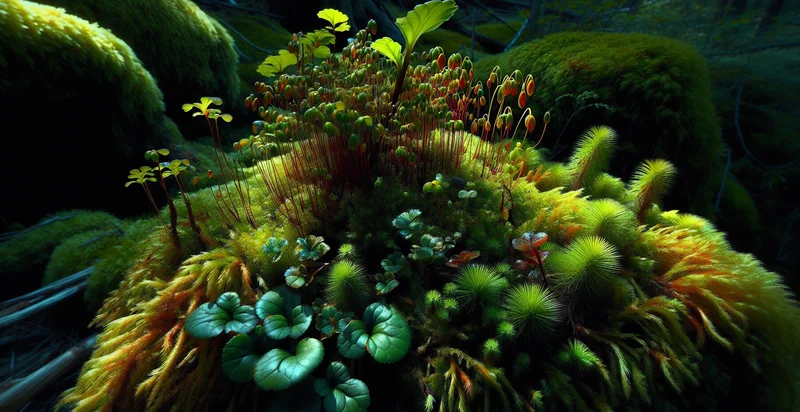Identify bryophyte species
using AI
Below is a free classifier to identify bryophyte species. Just upload your image, and our AI will predict what bryophyte species it is - in just seconds.

Contact us for API access
Or, use Nyckel to build highly-accurate custom classifiers in just minutes. No PhD required.
Get started
import nyckel
credentials = nyckel.Credentials("YOUR_CLIENT_ID", "YOUR_CLIENT_SECRET")
nyckel.invoke("bryophyte-species", "your_image_url", credentials)
fetch('https://www.nyckel.com/v1/functions/bryophyte-species/invoke', {
method: 'POST',
headers: {
'Authorization': 'Bearer ' + 'YOUR_BEARER_TOKEN',
'Content-Type': 'application/json',
},
body: JSON.stringify(
{"data": "your_image_url"}
)
})
.then(response => response.json())
.then(data => console.log(data));
curl -X POST \
-H "Content-Type: application/json" \
-H "Authorization: Bearer YOUR_BEARER_TOKEN" \
-d '{"data": "your_image_url"}' \
https://www.nyckel.com/v1/functions/bryophyte-species/invoke
How this classifier works
To start, upload your image. Our AI tool will then predict what bryophyte species it is.
This pretrained image model uses a Nyckel-created dataset and has 30 labels, including Archidium, Aulacomnium, Barbula, Brachythecium, Bryum, Campsite, Cephaloziella, Ceratodon, Chiloscyphus and Dicranum.
We'll also show a confidence score (the higher the number, the more confident the AI model is around what bryophyte species it is).
Whether you're just curious or building bryophyte species detection into your application, we hope our classifier proves helpful.
Related Classifiers
Need to identify bryophyte species at scale?
Get API or Zapier access to this classifier for free. It's perfect for:
- Conservation Planning: The bryophyte species identifier can be utilized by conservation organizations to identify and monitor sensitive habitats. By classifying bryophyte species accurately, these organizations can develop effective management strategies to protect endangered species and their ecosystems.
- Ecological Research: Researchers in botany and ecology can use the identifier to conduct studies on bryophyte diversity and distribution. This information is crucial for understanding ecological interactions, climate change impacts, and habitat health.
- Agricultural Applications: Farmers and agricultural scientists can leverage the bryophyte species identifier to manage land more sustainably. By identifying bryophytes present in fields, they can assess soil health and moisture retention while controlling weeds that compete with crops.
- Environmental Impact Assessments: Environmental consultants can employ the identifier when conducting impact assessments for construction and development projects. Knowing which bryophyte species are present can help in evaluating the potential ecological impacts and ensuring compliance with environmental regulations.
- Educational Tools: Educational institutions can integrate the bryophyte species identifier into curricula for biology and environmental science courses. It can serve as a practical tool for students to learn about plant biology, ecology, and the importance of biodiversity.
- Restoration Ecology: Ecologists involved in habitat restoration can use the identifier to select appropriate bryophyte species for reintroduction. Understanding the local bryophyte species can help ensure that restoration efforts support native ecosystems effectively and promote biodiversity.
- Citizen Science Platforms: Citizen science projects can incorporate the bryophyte species identifier to empower volunteers to contribute to biodiversity data collection. This can enhance public engagement and awareness regarding local flora and conservation efforts while providing valuable data for scientists.


